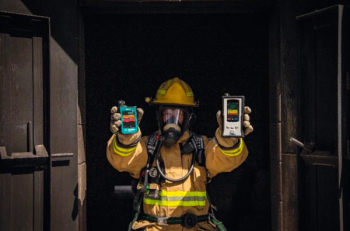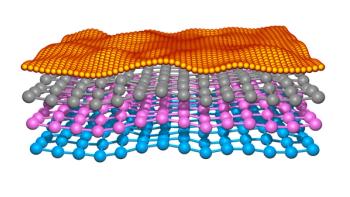
Researchers using a portable Raman spectroscopy system have begun in-field analysis of Stonehenge's Altar Stone, aiming to determine its origin and composition, potentially uncovering new insights into the ancient monument's history.


Researchers using a portable Raman spectroscopy system have begun in-field analysis of Stonehenge's Altar Stone, aiming to determine its origin and composition, potentially uncovering new insights into the ancient monument's history.

Researchers at Budapest University of Technology and Economics have developed a novel method for real-time monitoring of the protein purification process using Raman and near-infrared (NIR) spectroscopy. Their study compares the effectiveness of these two spectroscopic techniques in tracking the removal of imidazole, a process-related impurity, during the purification of the SARS-CoV-2 spike protein's receptor-binding domain (RBD).

A trip to the Lyndon B. Johnson Space Center served as a reminder of the importance of space exploration and the key role spectroscopy plays in this industry.

Researchers from Humboldt-Universität zu Berlin and the German Aerospace Center (DLR) have developed a cutting-edge fiber-dispersive Raman spectrometer (FDRS) capable of detecting low-density biological matter in space. By combining a single-photon detector with a dispersive optical fiber element, the team achieved a breakthrough in in-situ Raman spectroscopy, promising unprecedented sensitivity and reliability in the search for extraterrestrial rudimentary life.

Metrohm Spectro Inc., a New Jersey-based company that develops and manufactures analytical science instruments, announced the expansion of its Raman Chemical Warfare Agents library to include 111 deadly substances.

A recent study explores the strengths and limitations of spatially offset Raman spectroscopy (SORS) and micro-SORS, offering new insights into their applications for non-invasive subsurface material analysis. The findings provide valuable guidelines for choosing between these techniques based on sample characteristics and analytical needs.

An innovative study has demonstrated that two-dimensional correlation spectroscopy (2D-COS) can effectively differentiate between toxic and biocompatible carbon nanofibers (CNFs), offering a novel method for evaluating the safety of nanomaterials intended for medical use.

A recent study examined using Raman spectroscopy to screen leukemia in patients.

A recent study from Sichuan, China, leveraged a few spectroscopic techniques with chemometrics to analyze key components of the beer brewing process.

A recent study looks at using Fourier transform infrared (FT-IR) spectroscopy to distinguish between platinum-resistant and platinum-sensitive ovarian cancer tissues.

A recent study combined Raman spectroscopy with chaos theory to improve the reliability of diagnosing several types of cancers.

A recent study from the Center for Research on Archaeometry and Conservation Science demonstrated the value of using μ-Raman spectroscopy to analyze ancient ceramics.

Top articles this week include how spectroscopy is being used in education, athletics, and biology.

A recent study demonstrated how using laser spectroscopic techniques can help uncover new information about archaeological samples.

A recent study from the Yunnan Academy of Agricultural Sciences in China explored how five vibrational spectroscopic techniques are used to combat food adulteration.

Recent advancements in highly-multiplexed Raman imaging are set to revolutionize 3D spatial biology, offering unprecedented insights into complex biological systems. This new technology, highlighted in the Royal Society of Chemistry journal Chemical Communications, was reported by researchers from Shanghai Medical College, shows promise for enhancing our understanding of physiological functions and disease progression.

Surface-enhanced Raman spectroscopy (SERS) is emerging as a powerful tool in brain research, offering enhanced sensitivity and stability over traditional methods. This technique promises to revolutionize the diagnosis and understanding of brain disorders, such as Alzheimer's and Parkinson's diseases, by providing rapid, reliable, and non-invasive diagnostic capabilities.

Top articles this week include another SciX interview with, using Raman imaging to measure the impact of glucose on cancer cells, and diagnosing brain disorders.

Researchers have used Raman spectroscopy and chemometric methods to reveal how glucose affects normal and cancerous brain cell metabolism. Their findings highlight specific biomarkers that can distinguish metabolic changes, potentially aiding in cancer research and treatment.

A recent research collaboration with scientists from Virginia examined using Raman spectroscopy in veterinary medicine to help detect cancer in dogs using urinary screening tests.

Recent research highlights the potential of liquid biopsy combined with Raman spectroscopy (RS) in diagnosing brain disorders. These innovative techniques offer non-invasive, precise, and continuous monitoring capabilities, presenting a promising future for early detection and intervention in conditions such as neurodegenerative diseases (NDs) and traumatic brain injury (TBI).

In a recent study from China University of Mining and Technology, researchers introduced a new fusion model using Raman spectroscopy technology to ensure the authenticity of dairy products.

A recent study looked at addressing the challenges of laser power settings in Raman instruments to improve them for conducting analysis on Mars.

A recent study published in Analyst examined how Raman spectroscopy can be used for detecting microplastics in environmental samples.

An exploration of the battery industry is presented here, with future outlooks described.